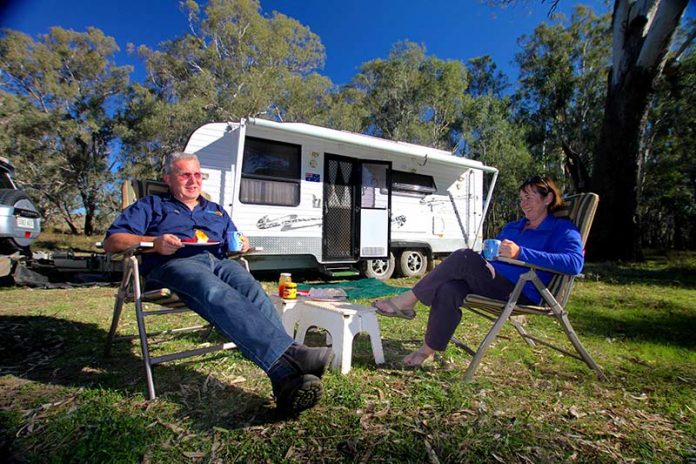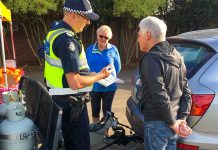As much as we try to eliminate travelling with fragile items, there are times when it just can’t be avoided. Here are a few hacks we use for some everyday items stored in our RV to ensure they all arrive at our destination in one piece, every time.
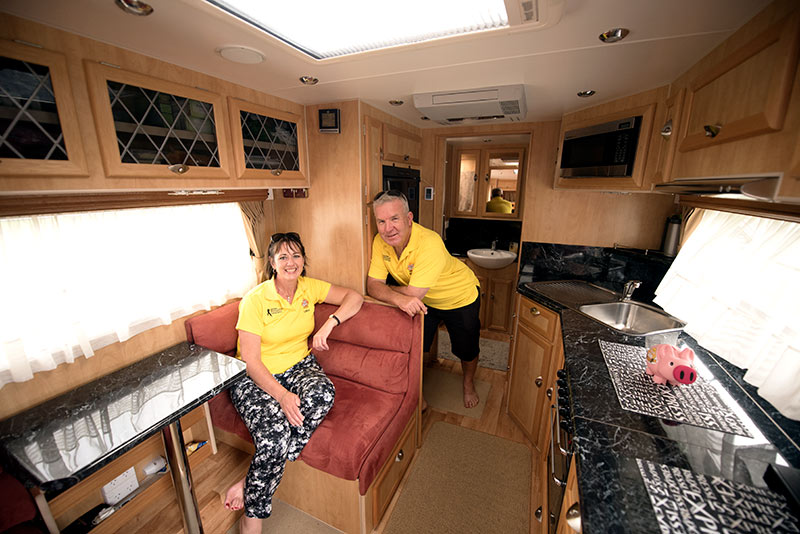
GLASSES AND MUGS IN YOUR RV
When you’re touring in an RV, it doesn’t mean you’re limited to drinking out of plastic. We’d be the first to ditch these for some real glasses and ceramic mugs.
But it all comes down to how you store them, and the ideal way is to keep them separate. One quick mod we made in our caravan more than a decade ago only uses some scrap cardboard and a glue gun. By cutting the cardboard to size and using some glue, we created dividers in one of our caravan’s lower drawers that keeps our breakables separated.
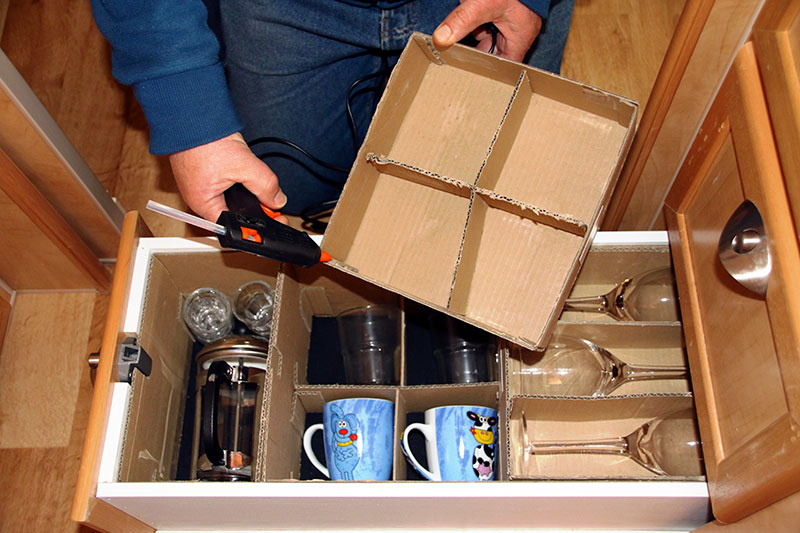
It has turned out to be one of our favourite caravan mods that cost less than a store-bought coffee to put together.
MICROWAVE GLASS TURNTABLE
Microwaves are a popular RV addition and you’ll know their glass turntables aren’t the cheapest to replace if you’ve ever had one break.
One way to protect the turntable is to store some light items on top of it while in the microwave to prevent any movement. Our preference has always been to store the turntable in the microwave using a ‘pocket’ for protection.
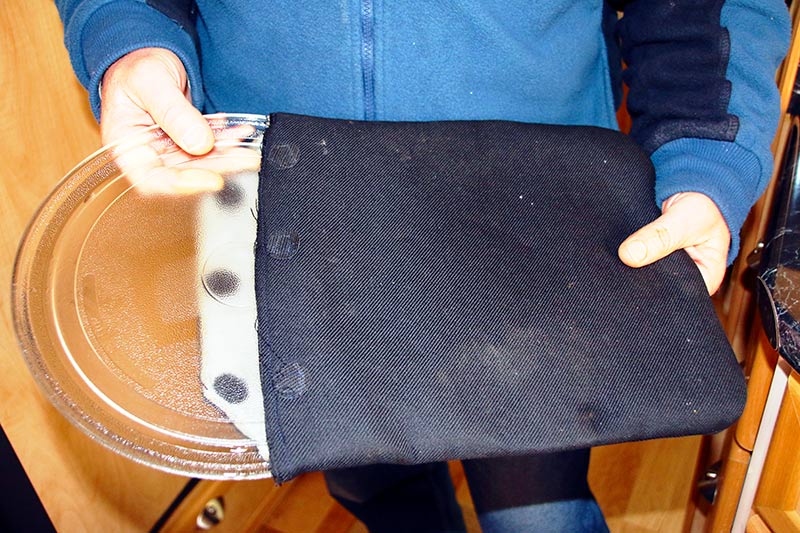
Using some thick material offcuts, we’ve sewn the material on three sides to create a pocket, which the glass turntable slips into. The material acts like padding and provides a good amount of protection when travelling on any rough roads.
TV
The humble television is one big ticket item that you don’t want to have to replace if it can be avoided.
Leaving it on the swing arm during transit might be a solution that some travellers adopt, but it’s not something we do. Other options include placing the TV on the bed while you’re on the road, or simply keeping it in its original box under the bed is another popular choice.
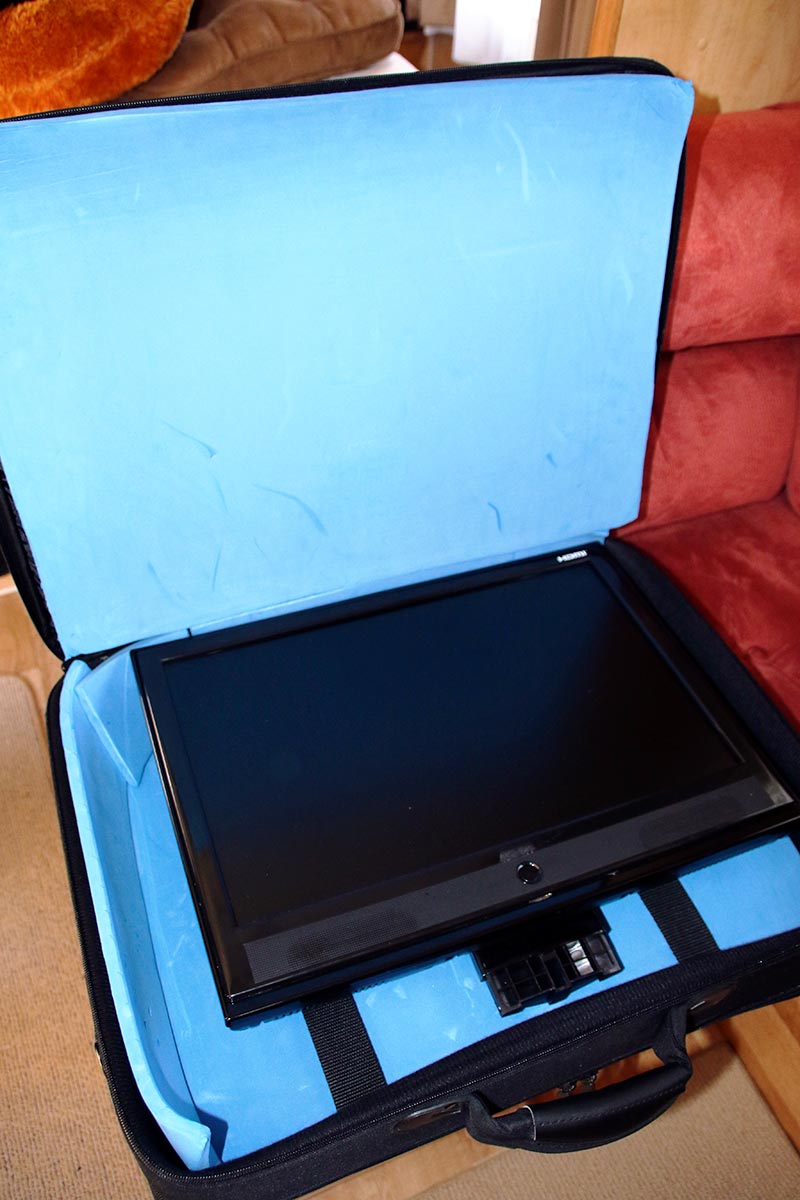
We picked up a large laptop-style bag years ago that has worked a treat to keep the TV safe. We also added some foam offcuts for additional protection.
The bag is easily stored upright under the bed when travelling, where its movement is restricted should we ever need to brake in a hurry.
BOTTLES AND JARS
When so many sauces, chutneys, jams and other condiments can only be purchased in glass, it can make travelling with them a bit tricky. But there are a few different cost-effective ways to keep them in one piece.
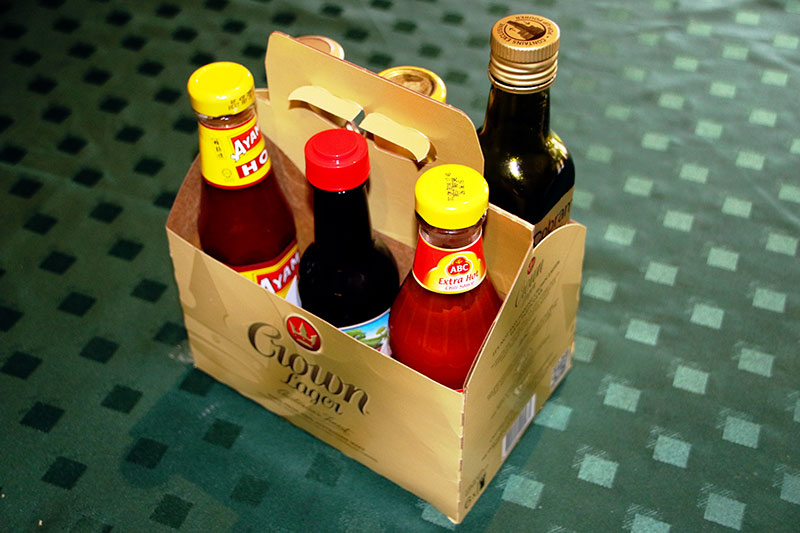
Our favourite storage technique is to use the cardboard packs that come with six-packs of beer. You’ll find they’re the perfect size for a range of bottles or jar sizes. We store them low, underneath a dinette seat.
Other options include bubblewrap and tea towels, and even drink coolers works a treat. Whichever solution you adopt, it needs to be easy to use. Otherwise, you may find you’ll do it a few times before the novelty wears off… and that’s when accidents happen.
LIQUIDS AND OTHER ITEMS
When most RV drawers are large areas of open space and cupboards have either an open cavity or a couple of shelves, you need to consider how they are packed.
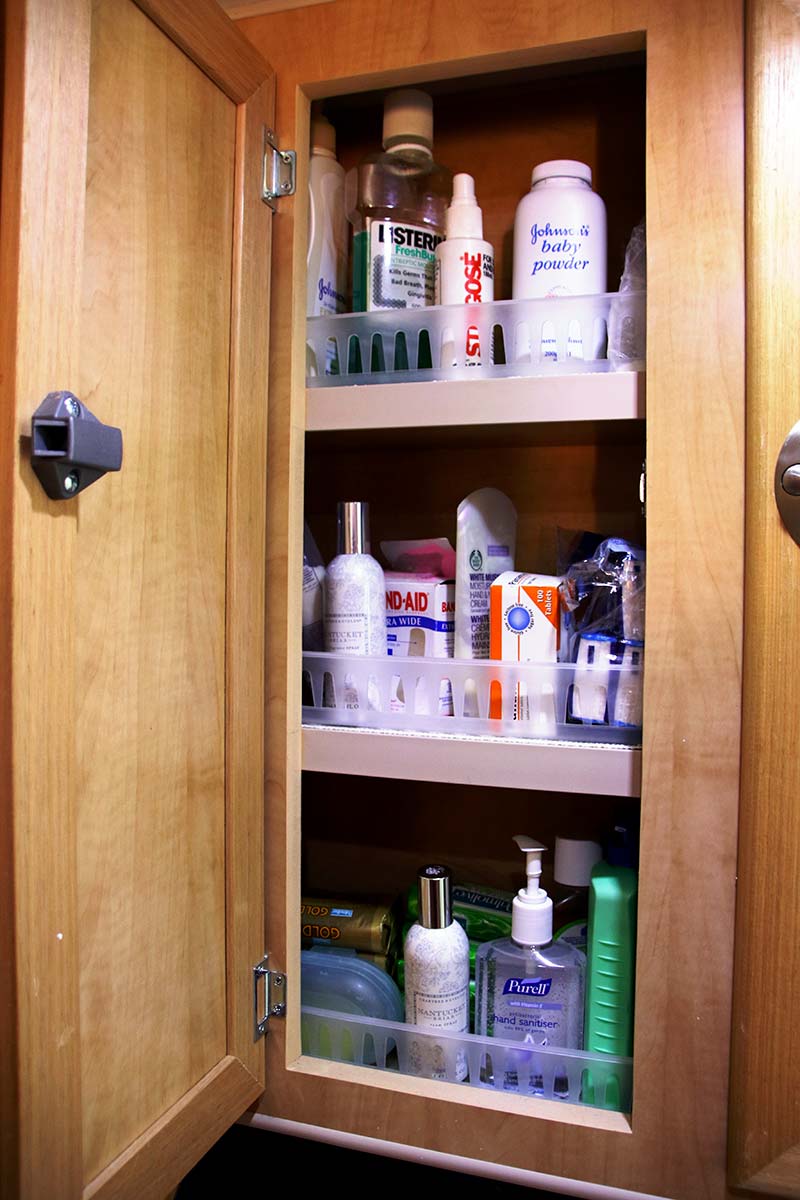
To avoid cupboard contents becoming missiles or drawer contents being turned upside down during transit, try storing items in plastic baskets or trays. Both are useful throughout our caravan, including in the fridge where there’s plenty of liquids.
While we never plan on having any spillages, it’s much easier to clean out a basket compared to cleaning out the entire fridge. Many discount stores have a large selection of baskets and trays of all shapes and sizes; they’re lightweight and a cost-friendly option.
SHOWER HEAD
There are a few different methods for storing the shower head when you’re on the road and it really boils down to personal preference.
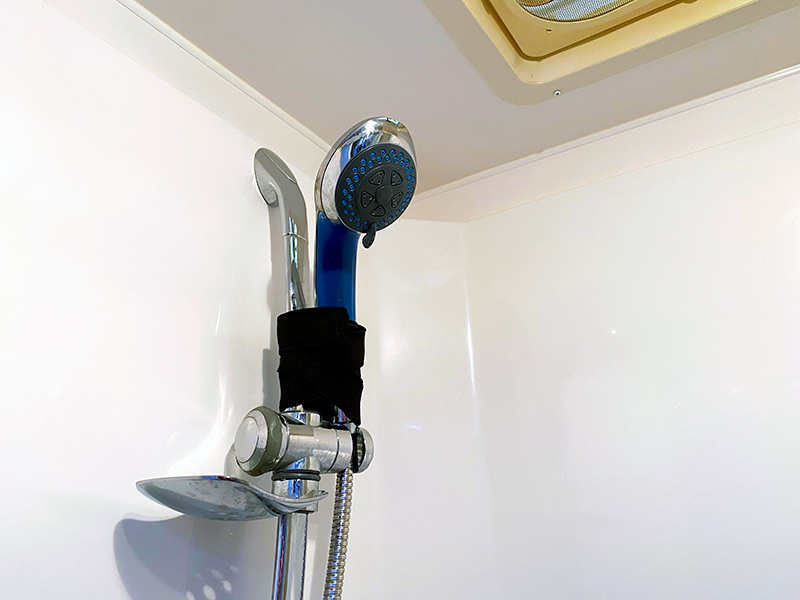
Removing the shower head completely or laying it down on a towel placed on the shower floor are just a couple of options. But the method we’ve always adopted is to secure the head in place using a stretchable strap that has a bit of Velcro on the ends.
By wrapping the strap around the shower head and its attachment pole, it’s then a case of securing it in place with the Velcro. It’s a no-fuss method and these versatile straps can be picked up from a discount store for around $3 for a packet of two.
OTHER STORAGE IDEAS
While the above are some of the more common items that can break in a van while it is being towed, here are a few other ideas to help keep your fragile items safe…
NON-SLIP MATTING
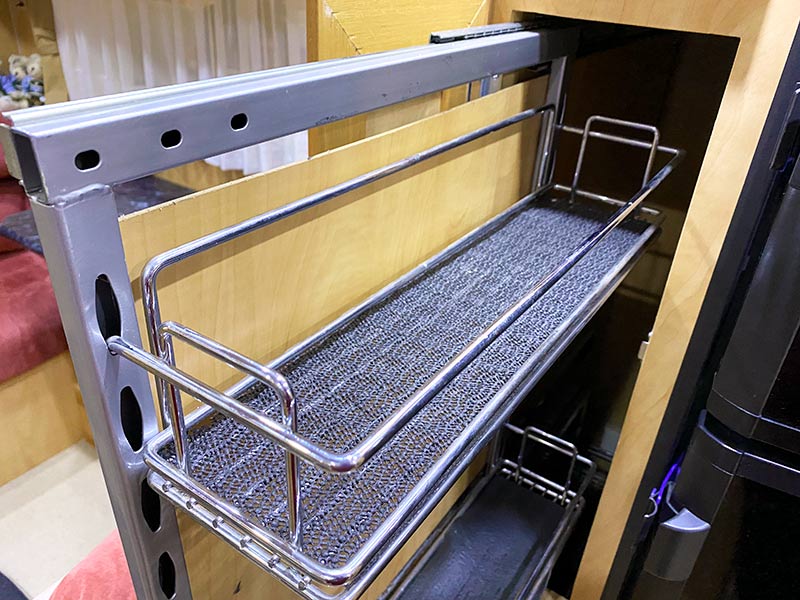
Line cupboards and drawers to prevent contents from moving. It may not stop all movement, but non-slip matting goes a long way to keeping things in place while also preventing drawers and cupboards from being scratched.
ORIGINAL PACKAGING
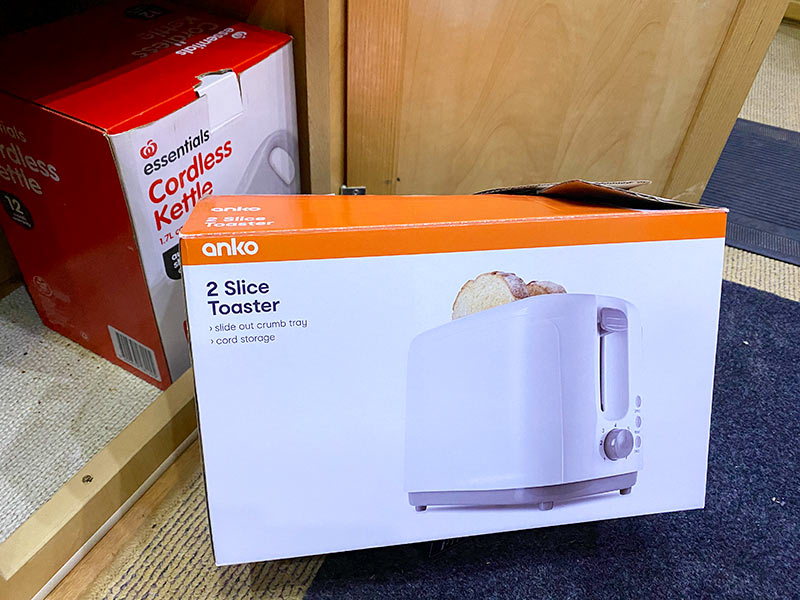
Aim to keep fragile items in their original packaging, especially odd-shaped items, such as kettles and toasters, which can easily be damaged. This will restrict their movement and make them easier to store.
USING ‘STUFFERS’
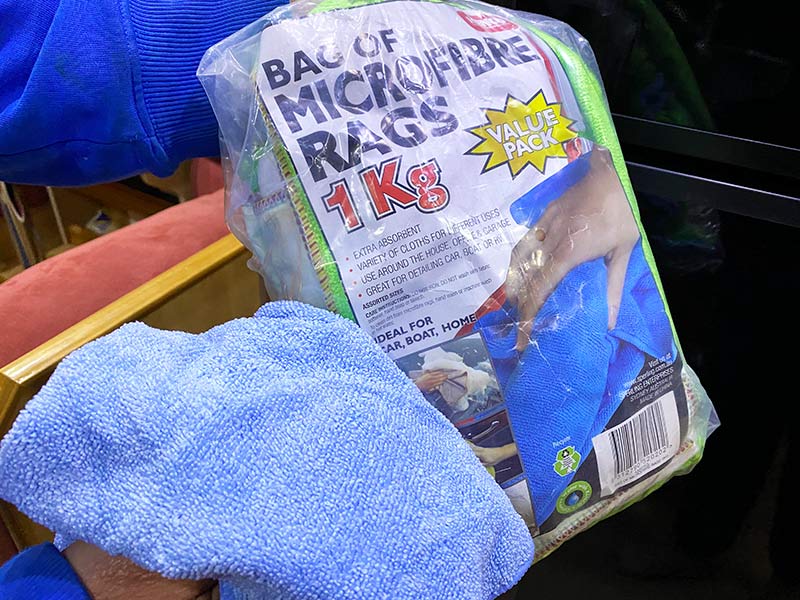
These can be used for filling any void to stop things moving around. Microfibre cloths and spare linen, especially tea towels and flannels, make perfect stuffers.
SUMMING UP
At the end of the day, anything in your RV that can move can break. Take a look around your RV to work out what’s best for your setup when storing breakable items.
The tips we’ve provided are something that won’t cost you the earth to adopt, and will go a long way towards ensuring your fragile items remain intact each time you’re on the road.


